Metal Detecting Addict Finds Buried Treasure Under Farmland
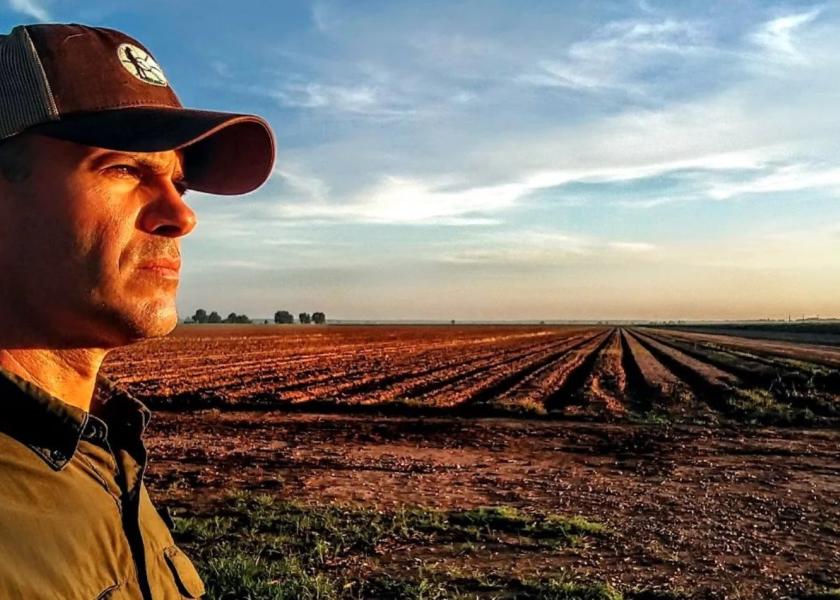
An adrenaline junkie needs a farmland fix. Metal detector in hand, Andy Thaxton marches the rows and pasture of countless acres, hunting coins, keys, bullets, and bells—the final testament of forgotten lives.
Wonderfully addicted, Thaxton’s pulse surges with every crackle, whine, growl, beep, and buzz of the metal detector. One more dig, one more artifact, one more holy grail, and one more peek into the past.
“It never gets old,” Thaxton exclaims. “It’s a feeling that gets deep inside you and only gets stronger. I can’t even drive beside farmland without feeling the pull of fields that once were not so empty.”
Time to walk through a field and hear it whisper.
Digging Ghosts
An enlisted marine for 11 years and now a commissioned naval officer for 17 years, Thaxton, 45, lives in west Tennessee, but grew up in northcentral Louisiana, searching for arrowheads and fossils on his grandfather’s farm.
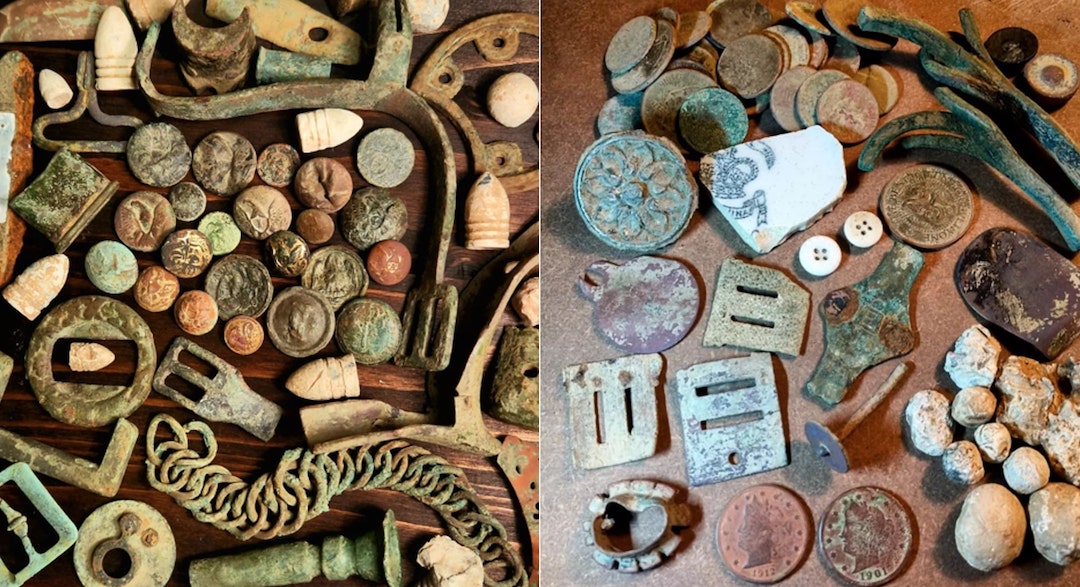
Several decades past youth, in 2016, Thaxton watched in amazement as his older brother, Deron, wielded a metal detector and called the shot: “Dime at 12 inches.”
The prediction was precise: Deron flipped a scoop of dirt at a 1’ depth and exposed a Seated Liberty 10-cent piece from the 1830s.
Thaxton instantly was infected by a virulent strain of the metal detecting disease.
“I was blown away,” Thaxton says. “Right there, I got hooked and it’s been an adventure ever since.”
Adventure, indeed. Seven short years later, with shelves and boxes overflowing with a steady, incoming stream of buried treasure, Thaxton has taken his metal detecting hobby to social media, finding a hungry audience, with millions of views on multiple platforms via a riveting channel: I Dig History.
“I primarily hunt farmland, but I also hunt a lot of unmarked Civil War sites, and I’m looking for tiny parts of people’s lives that are forgotten,” he says. “These were not people of means, but people struggling to make it. The dimes or quarters I find probably caused heartache when they were lost and I never forget that.”
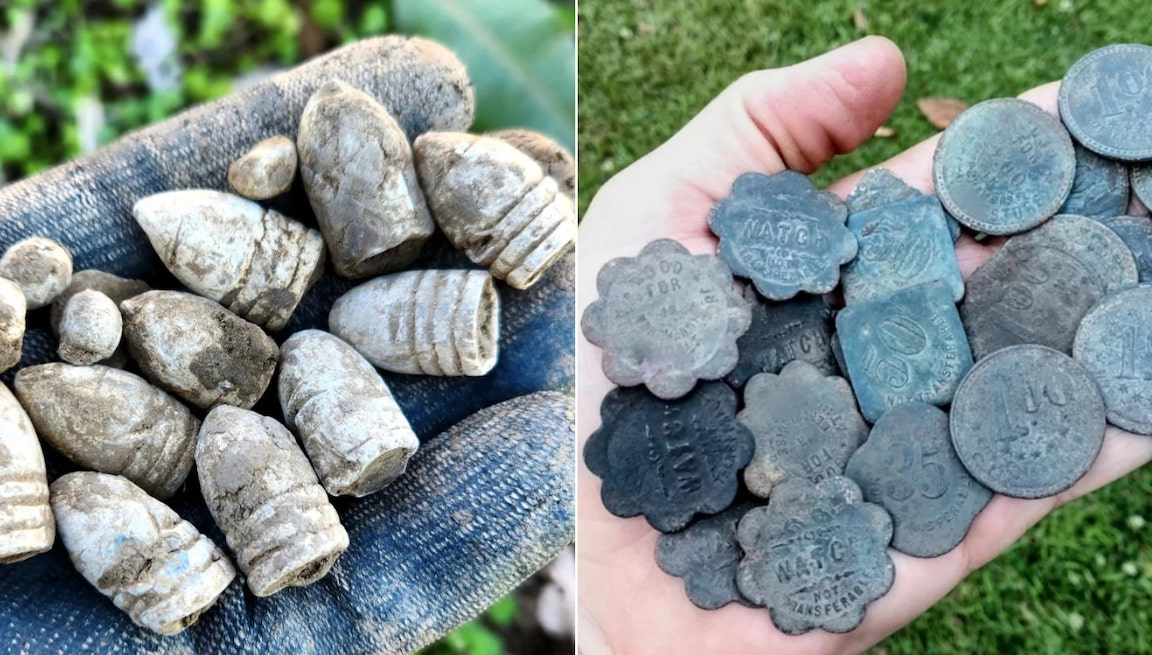
Ultimately, Thaxton aims to connect object to individual. “When you dig up something that can be traced to a specific person or event, then you’re bringing a memory to life. That’s the incredible power of metal detecting and people who care know what I’m talking about.”
Frozen Time
The night before a hunt, Thaxton walks a wire. Jittery. Jacked.
“I’m playing things out in my mind and I don’t sleep well. What am I going to find? Where should I concentrate my efforts in the field? What is my strategy? What is my game plan? Every site is unique and I always have a fallback plan."
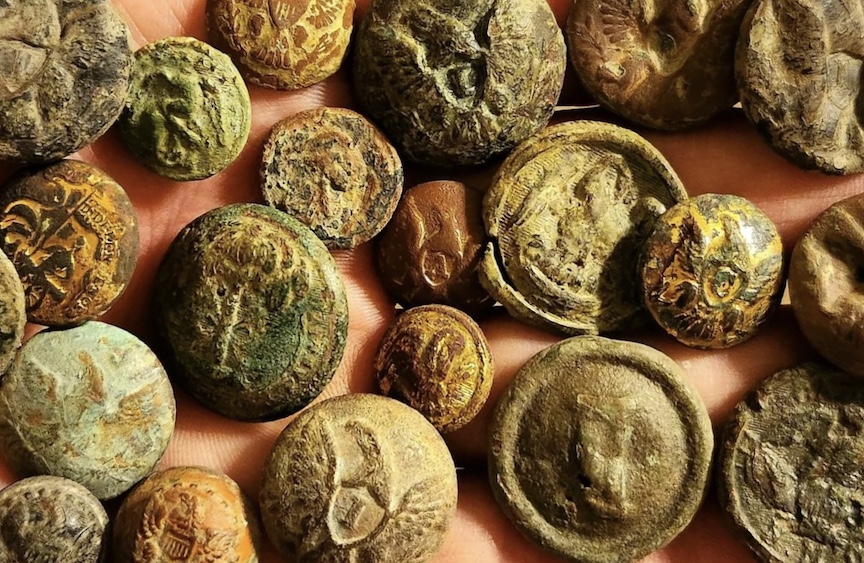
Typically, his hunts are backed by extensive research. “Sometimes I’ve read two or three hours for every hour I’m in a field. There are websites with really old topographic maps and aerial photography maps. I go in and pull off the GPS coordinates.”
“For example, an 1800s map might have black dots for homes, a cross for a church, and a flag for a school. I compare that with modern fields and try to match up the sites. Sometimes, the measurements are so exact that I’m in a field and I know I’m literally standing at the front door of a particular sharecropper’s home, and it’ll be evident by the bricks, glass, and pottery shards on the ground.”
Backed by a few hours of fitful sleep, he climbs into a black, big-tired Tacoma and rolls across west Tennessee, bound for another farm and field, unfailingly accompanied by an audiobook—historical nonfiction, of course. Whether a 15-mile or 200-mile drive, the distance is irrelevant; destination is all.
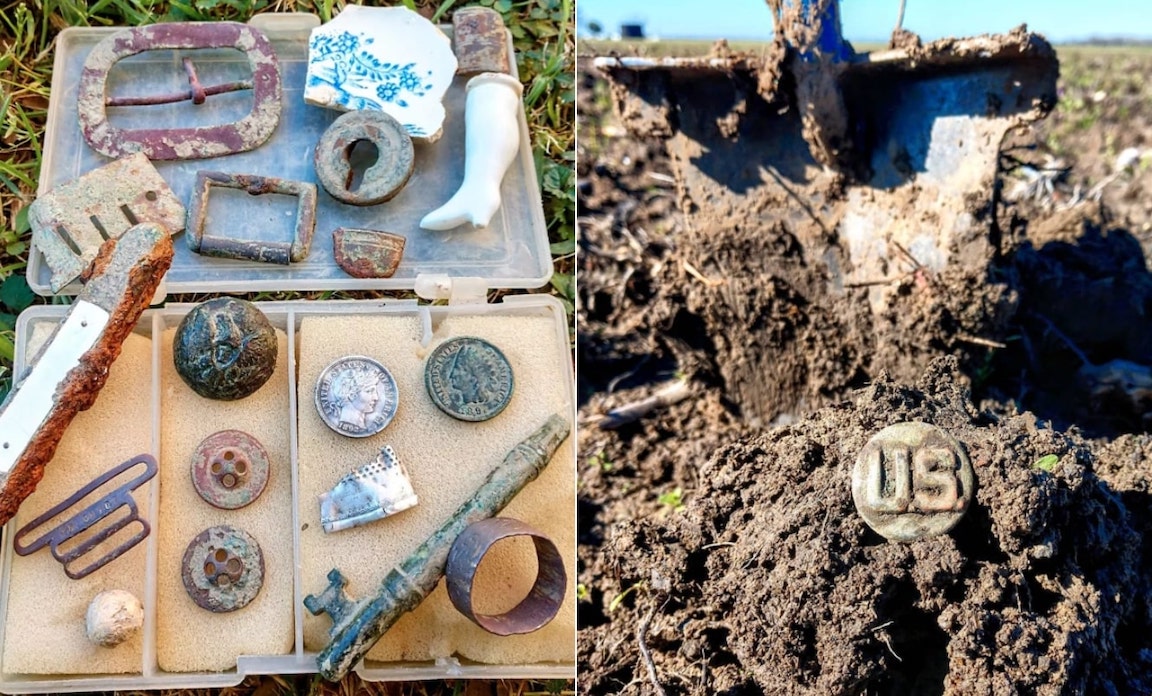
At every site, Thaxton hunts strictly with landowner permission. Work schedule and family duty permitting, he goes dawn to dusk in the fields, fueled by a standard sack lunch: tuna, pretzels, and a pinch of fruit. “Yeah, yeah, I’ll hunt all day,” he laughs. “And once I start, the day moves by in a blink. It’s hard to explain, but time gets blurred in those fields. It’s almost like time disappears.”
Hot Zone
Arriving on a hunt, Thaxton looks the part: Khaki cargo pants, button-up shirt tucked and belted, hiking boots or mud boots according to moisture, padded headphones, and an “I Dig History” ball cap. A multi-pocketed pouch hangs at his waist, along with a mini-shovel, handheld pinpoint detector, and tiny spray bottle.
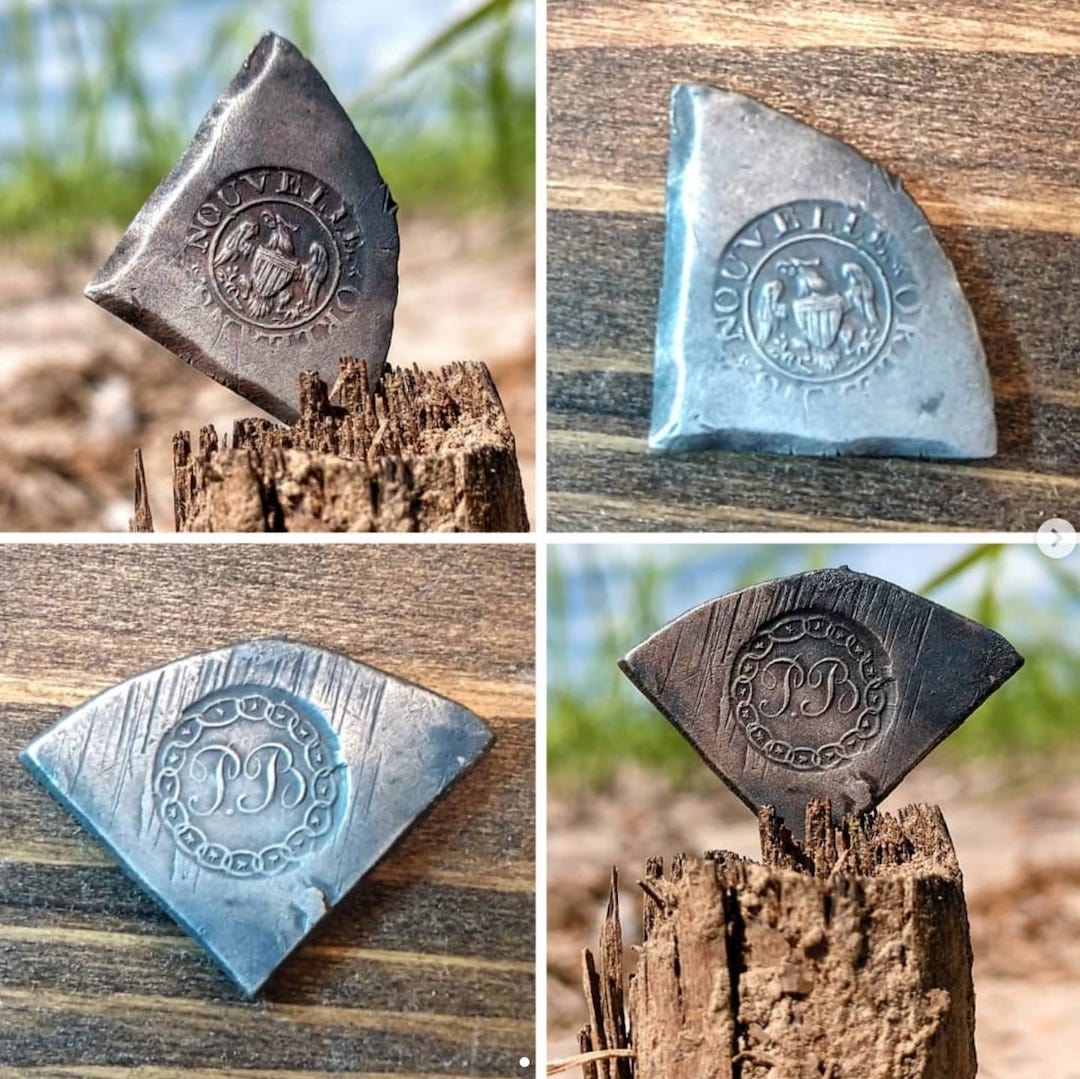
His weapon of choice is a Minelab Manticore. “It has the latest computing software and works so well by giving me key data on the display that provides a big clue as to what’s in the ground when I hear the signal go off. Everyone has their preferences, but there’s no question that the Manticore really makes finding things easier.”
“I can detect a big piece of iron down to 2’, but for coins, I can find them to a depth of 12” to 14”, according to the soil. Heavy iron content in the soil can distort the detection and mask everything.”
Walking off the turnrow, Thaxton waves his metal detector, listening for the sweet music of a high-pitch tone. “I’m swinging immediately, looking for signs. The dot on the map may be predated by far older structures. You never know until you’re out there and you can be fairly certain on the age once you start seeing the pottery ware on top of the dirt. When I determine the exact house location, then I’ve still got questions to ask. Where was the front yard? Where were the kids playing? Where was the trash pile? Where was the privy? All of these mini-locations are going to be good places to detect.”
When Thaxton’s detector begins to buzz in the hot zone of a site, his pace slows to a careful crawl. Out of the soil, sometimes lost for two centuries, come coins, blades, trinkets, and tokens, all deposited into the waist pouch: Trash in the main pocket, keepers in a smaller section, and premium items tucked in a tiny plastic tackle box with foam padding.
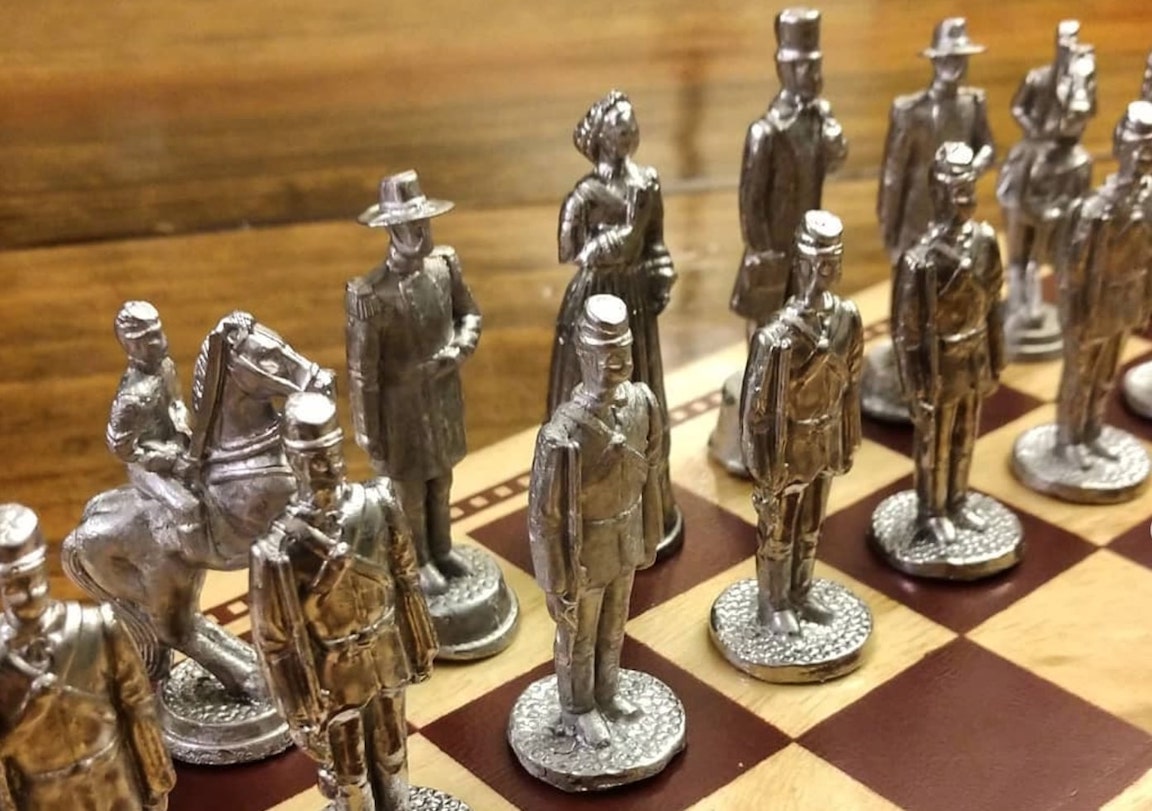
How were the items lost? Did a coin slip through a floorboard, or was it hidden in situ when the house was torn down, or did it spill from a pocket outdoors? “I always wonder if the items I find were lost inside or outside the house,” Thaxton says. “My opinion is ‘yes’ to both. Certainly, things have been spread around these properties for decades by tillage, but the general location pattern remains.”
On all his hunting sites, Thaxton offers first fruits to the farmer. “The reaction is different with every single person. Some farmers are curious and just want to see what is found. Some really appreciate the history. Some don’t care at all. I always want to say thank you and I do that by making little displays of bullets or unique items for the landowner. It’s just a sincere way to show how much I appreciate the permission to metal detect.”
Tracing the Thread
Civil War sites are a wild card. Farm-related dwellings often correspond to an “x marks the spot” pattern, Thaxton notes, but Civil War locations are cloaked in guesswork. “The history books and firsthand documents tell you in a vague manner where troops moved. Camp sites are hard to pinpoint, but there is always a lot of stuff left in the ground and I’m always amazed by the number of buttons left behind. Creek crossings are ideal hunting locations, but figuring out exactly where a military unit crossed can be a tough question.”

Thaxton detected his most satisfying find in 2023, a Civil War belt plate inscribed by the soldier-owner: Private Michael Hofer, 16th Ohio Infantry Regiment, Company A. “I researched the plate and found out there were multiple Union soldiers by the same name. I narrowed it down to a single unit and found him. He was here (west Tennessee) for about 20 days (November) in 1862 and must have dropped the plate.”
According to Thaxton’s research, Hofer transferred to the 30th Ohio and was killed at 20 years of age in the Chattanooga Campaign, November 1863—a year after losing the belt plate. Hofer was buried in Zanesville, Ohio, where the 16th originally mustered into service. “I intend to visit his grave someday,” Thaxton emphasizes. “Putting the story together was worth it all.”

Thaxton’s personal genealogy plays a significant role in his metal detecting pursuits. William Owen, Thaxton’s great-great grandfather, served the Confederacy in the Consolidated Crescent Regiment out of New Orleans. Owen’s unit saw combat multiple times during the Red River Campaign, including at the Battle of Yellow Bayou, just outside Simmesport, La., on ground presently covered partially by soybean fields.
Thaxton and his brother, Deron, received permission in 2022 to hunt the associated farmland. “We were allowed to dig buttons and bullets in the same fields where our great-great-grandfather fought. For us, the bullets we found were associated directly with him, and that is an overpowering feeling that is tough to put into words. That’s an awesome connection I can feel, but I can’t describe.”
“That’s what I’m looking for when I metal detect,” he adds. “It’s great to find a valuable coin, but I’m hunting for a full-circle experience. Finding an object drives the fire in me to keep looking, but tracing that object to its owner is almost like bringing someone back to life.”
The Grail
In 2021, I Dig History was born. Thaxton began posting pictures of his finds on Instagram. Likes and follows abounded. Instagram snowballed to YouTube videos, followed by social media expansion across the major platforms.
“Bottom line, I created my own corner to share with other people,” Thaxton explains. “I didn’t know so many people would start watching, but it’s humbling and the public interest really is out there.”
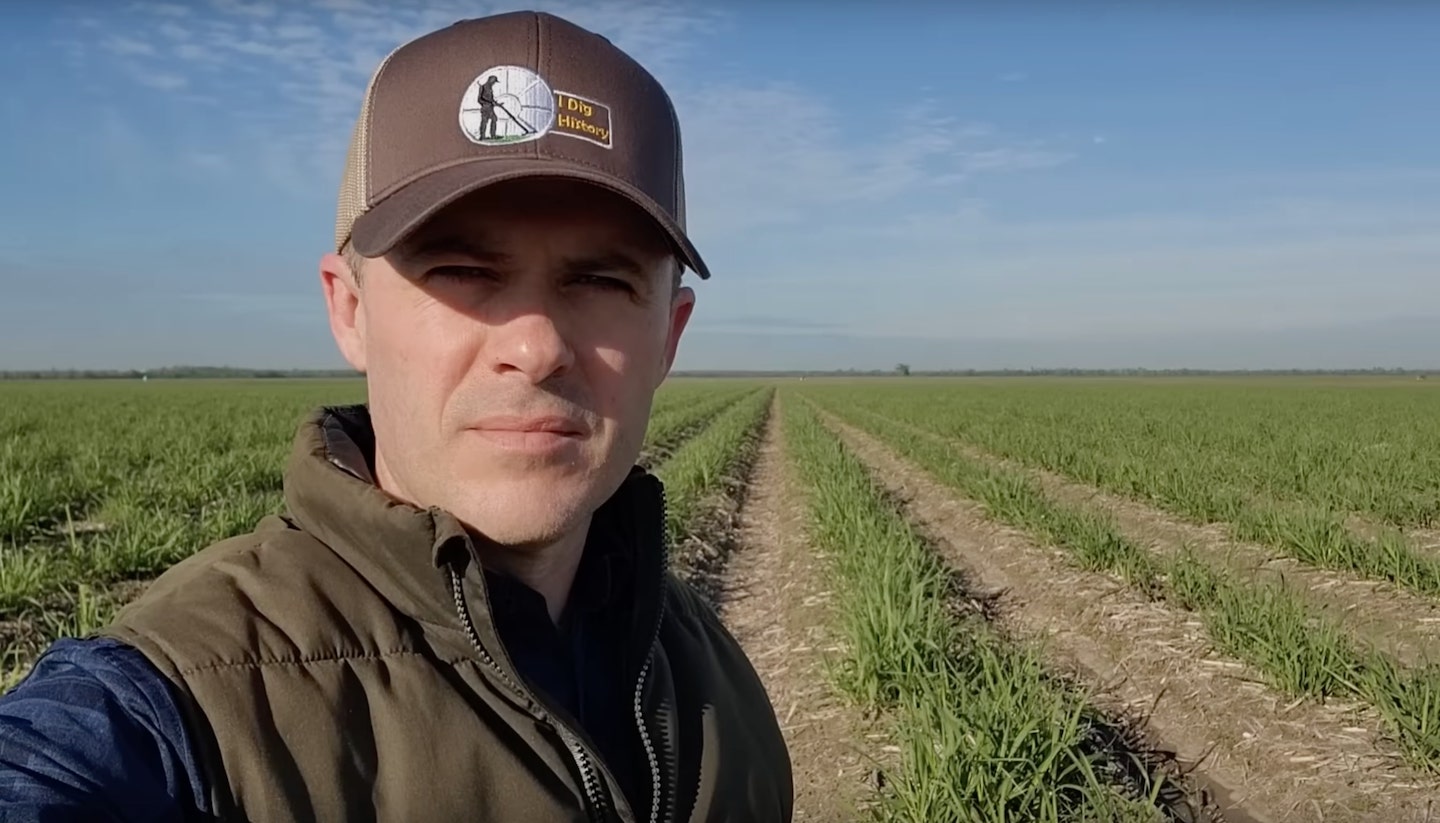
Does Thaxton have a holy grail artifact? A particular object yet to find? “That would be a George Washington inaugural button—a GW,” Thaxton describes. “There were several varieties made in 1789, but they’re rare and only found once every few years. Within metal detecting circles, everyone knows about the hunt for a GW.
In the meantime, expect to find Thaxton combing the rows: “I carry respect in those fields because someday the dynamic will change and someone will find something of mine in the ground. I always remember that my hobby is someone else’s life story.”
Truly. Every buried treasure hides a tale.
For more from Chris Bennett (cbennett@farmjournal.com or 662-592-1106), see:
American Gothic: Farm Couple Nailed In Massive $9M Crop Insurance Fraud
Priceless Pistol Found After Decades Lost in Farmhouse Attic
Cottonmouth Farmer: The Insane Tale of a Buck-Wild Scheme to Corner the Snake Venom Market
Tractorcade: How an Epic Convoy and Legendary Farmer Army Shook Washington, D.C.







